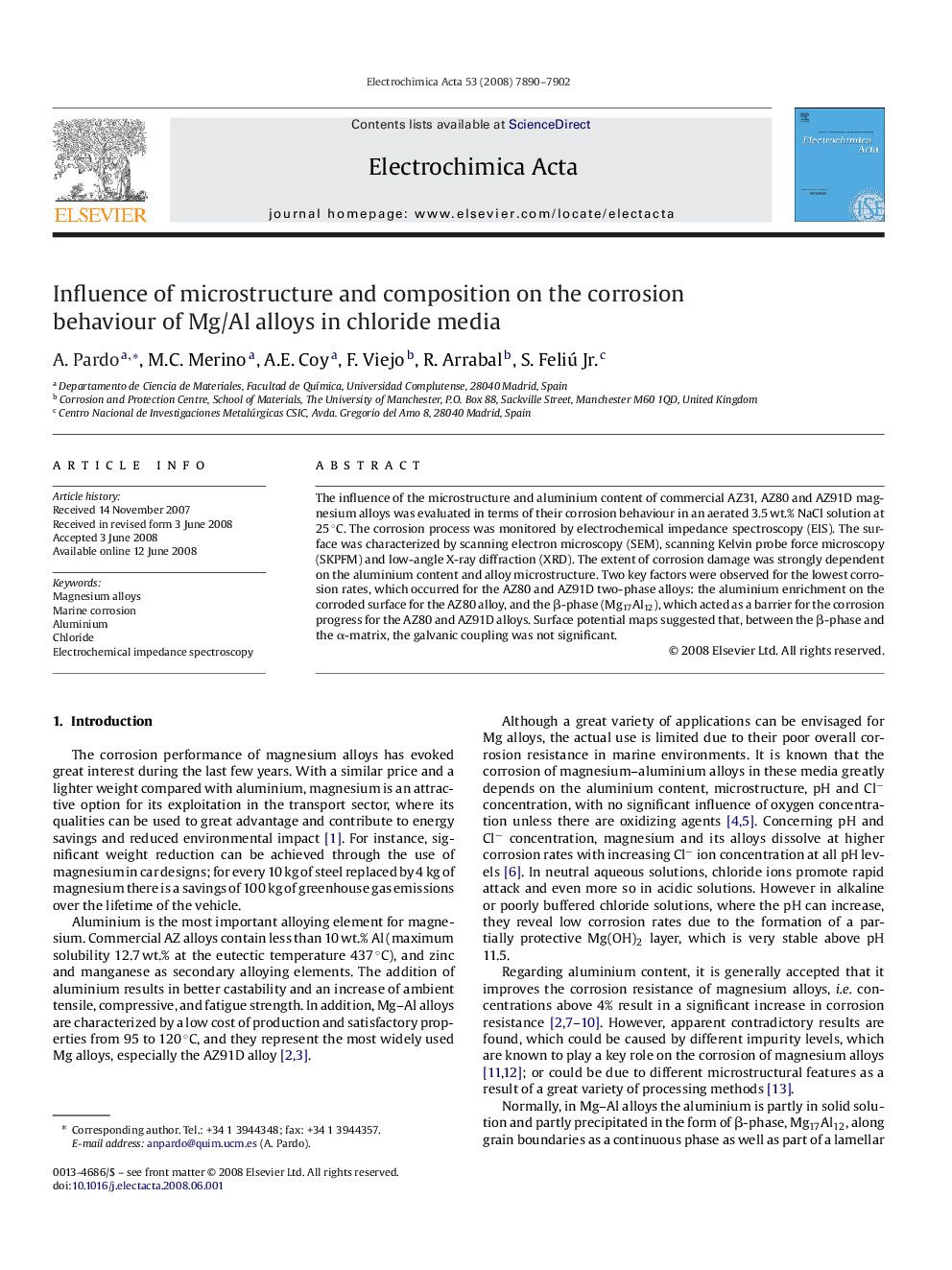| Article ID | Journal | Published Year | Pages | File Type |
|---|---|---|---|---|
| 194606 | Electrochimica Acta | 2008 | 13 Pages |
The influence of the microstructure and aluminium content of commercial AZ31, AZ80 and AZ91D magnesium alloys was evaluated in terms of their corrosion behaviour in an aerated 3.5 wt.% NaCl solution at 25 °C. The corrosion process was monitored by electrochemical impedance spectroscopy (EIS). The surface was characterized by scanning electron microscopy (SEM), scanning Kelvin probe force microscopy (SKPFM) and low-angle X-ray diffraction (XRD). The extent of corrosion damage was strongly dependent on the aluminium content and alloy microstructure. Two key factors were observed for the lowest corrosion rates, which occurred for the AZ80 and AZ91D two-phase alloys: the aluminium enrichment on the corroded surface for the AZ80 alloy, and the β-phase (Mg17Al12), which acted as a barrier for the corrosion progress for the AZ80 and AZ91D alloys. Surface potential maps suggested that, between the β-phase and the α-matrix, the galvanic coupling was not significant.
